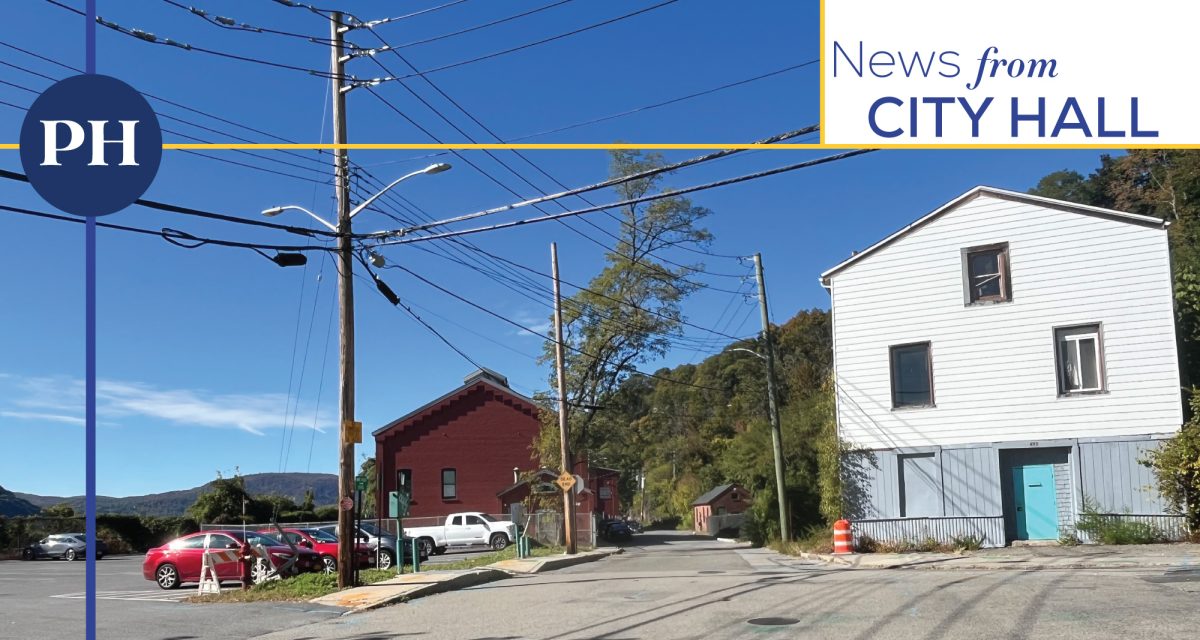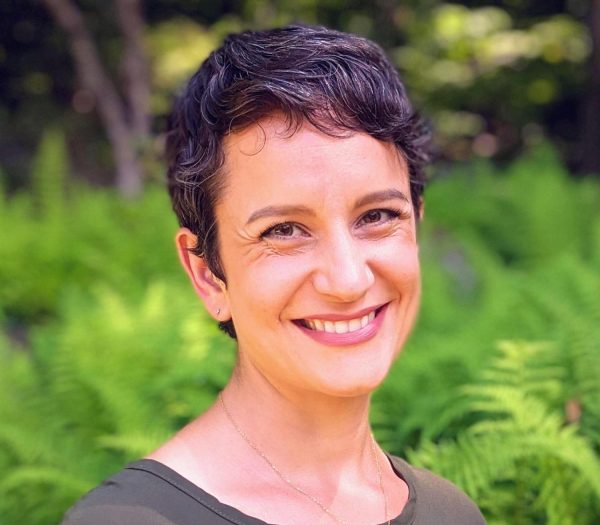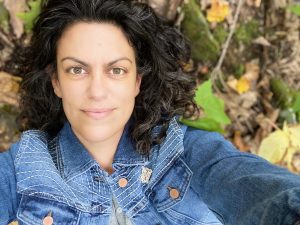
Shanti Nagel is a gardener, community organizer, landscape designer, and native plant enthusiast. Her work has changed the face of many NYC streetscapes and features native plants in areas with high human and automobile traffic.
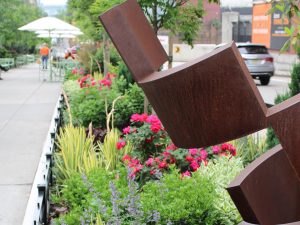
Through her landscape design business, Design Wild, Shanti centers the importance of mutual health between humans and the plant ecosystems we live in. To see the before-and-after of her projects is to see a minor miracle: the transformation from an exhaust-choked stretch of pavement in Midtown Manhattan to a sidewalk retreat named Canoe Plaza, replete with inviting colors and textures for humans and pollinators alike. Or take the evolution of an empty lot in Saratoga Springs to community pollinator garden, designed via consensus and planted by volunteers — these projects show the possibility all spaces have to embody aesthetic as well as ecological value.
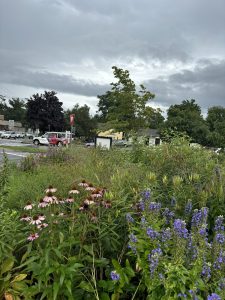
Shanti, born and raised in rural upstate New York, has always felt that the outdoors are her “happy place.” “Whether gardening, playing make-believe or just stacking wood with my dad, I was most at home working outside.” Even as a child, she felt the urgency of climate change; upon graduating high school, she opted to learn “how to farm, thinking growing food would be a good and valuable skill to acquire.”
I met Shanti at the Spring Landscape Conference at the Native Plant Center at SUNY Westchester Community CollegeCC, and I was struck by the zeal and optimism she brings to the discussion of plants and landscape design. Our conversation about her philosophy of gardening has been edited and condensed.
How did you go from growing food to landscape installation?
I had a commercial organic vegetable farm many moons ago and still love food production but in my mid-twenties, I went to study horticulture and the larger world of plants came into real focus. Ecosystem, evolution, and interdependency as well as a wild diversity of plants was and is mind-blowing.
Why does it matter to “plant native”?
Years ago, I was at a conference where an entomologist was also speaking. He showed the difference between a non-native oak and a native oak. The difference in what they support is exponential, meaning a non-native oak might support a few dozen caterpillar species and a native one might support over three hundred. This might in turn support hundreds of different bird species and other animal species and up and on and on into our web of interdependence.
Another way to think about it, plants and animals evolve together. The monarch butterfly, of course, is a great example that we use, how it’s evolved with the milkweed. So when we plant native plants, we’re supporting those existing relationships.
What percentage of natives should we aim for in our yards?
I like to tell people when I’m speaking on this topic that we’re plant nerds and we LOVE all kinds of plants! And the good news is you don’t have to give up your “exotic” or non-native plants (with the exception of invasive species); it’s more of a YES AND situation. We’re asking people to plant natives whenever possible. New gardeners may see how much information is out there and be worried they’re going to do it wrong or not be nerdy enough about it, and that’s crazy. This has to be fun and playful and the more we add, the better. Buy some native plants, research the ones around you. However you can dip into it, if it’s just replacing one shrub with a native shrub, that’s great.
Often, I find old-school gardeners who are fearful that the native plant movement is going to take away their peonies or lilacs or shame them for loving non-native plants, but I’m not into that divisiveness and I’m sure shame is never the answer to change. Yes, we can have our garden plants, and also plant tons of natives for our ecosystems. And perhaps we can think of plants like peonies and lilacs almost as living sculpture, because we love to have art in the garden.
We challenge people to think pushing closer to fifty percent that they’re going to dedicate to [native] ecological space. If everyone did that, it would be amazing. Even if it’s half a window-box, half of the plants that you choose could be ecologically beneficial plants, and they’re beautiful to look at.
What’s one piece of advice you’d give to someone starting a native garden?
One thing to keep in mind is to add native plants at all levels of habitat. This means large trees, small flowering trees, shrubs (lots of shrubs!), perennials — both sun and shade, all the way down to ground covers. There are great native plants at any size. Also changing how we care for our gardens is equally important. However, I believe one of the most important ingredients to all of this is fun. Keep experimenting, keep crushing on plants. Our world is changing, and our systems are shifting. It is truly critical work to improve the ecology of our world and there’s no better place than your own home to get started. Get out there, choose native plants, add diversity wherever possible and keep it joyful!
What does it mean to crush on a plant?
I love to use that language because my crushes change all the time, like the seasons. My favorite plant will change given what’s around me! Crushes are juicy, and exciting — joyful!
Why I like to think about it as a crush, you start to know it, you pay attention to it, learn something about it. And I think of plants as my friends, my elders… when we walk outside, we just see our friends.
Why consider woody plants or shrubs?
It’s easy to plant a few showy pollinator perennials like echinacea and walk away, but shrubs maintain more presence. They’re full of food for pollinators and birds; color, texture, and flowers. They can also be easier for people to work with as they age because of their stature and easy care. If you don’t have the room for a full size tree, shrubs can be a place where things live, nest, feed, and hang out with their friends. They complete an ecology from big trees all the way down to shrubs, perennials, smaller perennials, and ground cover.
Here are three woody plants I’m crushing on these days:

Aronia arbutifolia (Red Chokecherry)
This is a natural-feeling shrub in the rose family; it flowers early in the season, perhaps just about now? It has beautiful fruit that birds like, it’s wonderful in mass plantings and even in containers, with just one plant underneath it. It comes back year after year all on its own.
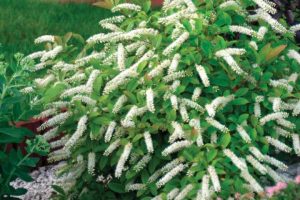
Itea virginica (Sweetspire)
A small shrub, which I love for its size. It has beautiful, fragrant flowers. I also love this en masse, like if you don’t want to weed or plant any other perennials in your beds, just cover the whole front of it in itea. One of its best qualities is beautiful fall color, turning burgundy in the fall.
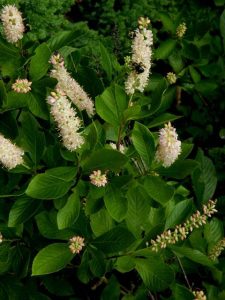
Clethra alnifolia (Summersweet)
There’s this bike ride in coastal Massachusetts and if you hit it at the right time of the year, it is absolute heaven, the scent. It’s a medium-sized shrub, with different varieties that get slightly bigger or smaller, or even with pinker flowers, but mostly white. It’s a handsome, easy to maintain shrub, barely any pruning involved.
You love to work with container gardens as a landscape designer. Could you tell us an optimal combo for the Hudson Valley in a medium-sized container–say, one big enough for a shrub and some flowering perennials?
I think what’s beautiful about using natives and containers is that it can be really simple. For instance, a good-sized container with Aronia or red-twigged dogwood (Cornus sericea) as the main plant, and Phlox subulata (or moss phlox) around the base. The phlox foliage will be beautiful all year round, and of course, would be a real show in the spring.
Read It and Reap News: Be sure to come out to support the Peekskill Garden Club in buying plants for your spring gardens! The sale will take place May 10th at the Riverfront.
Keep sending in your questions for Lucy at [email protected], and enjoy spring’s small miracles!




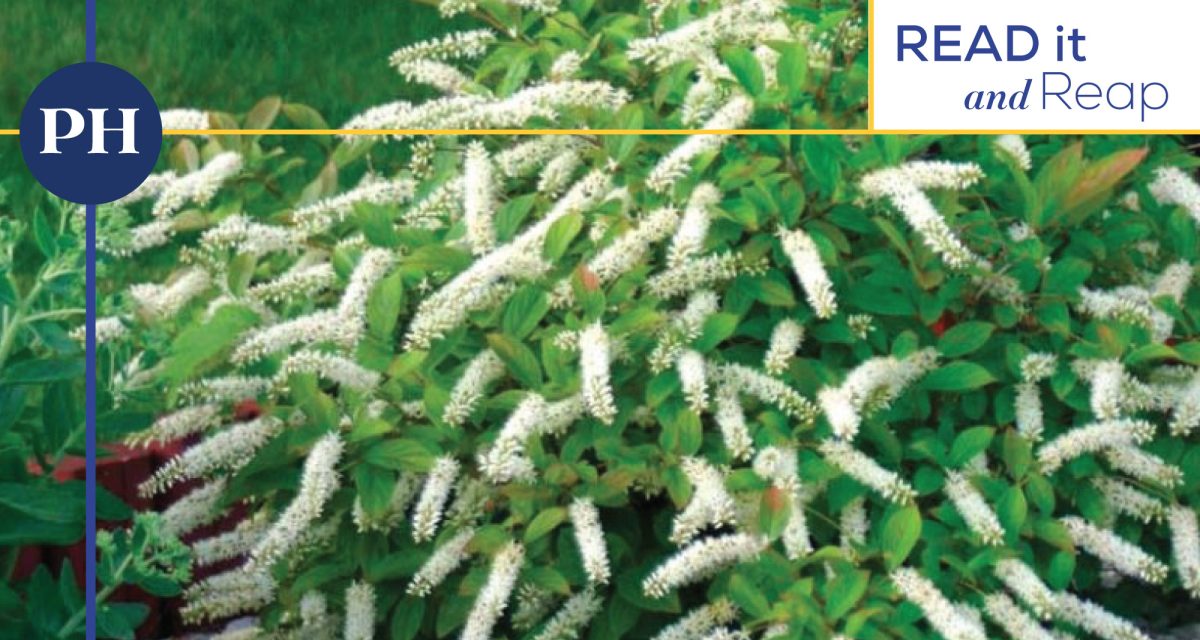



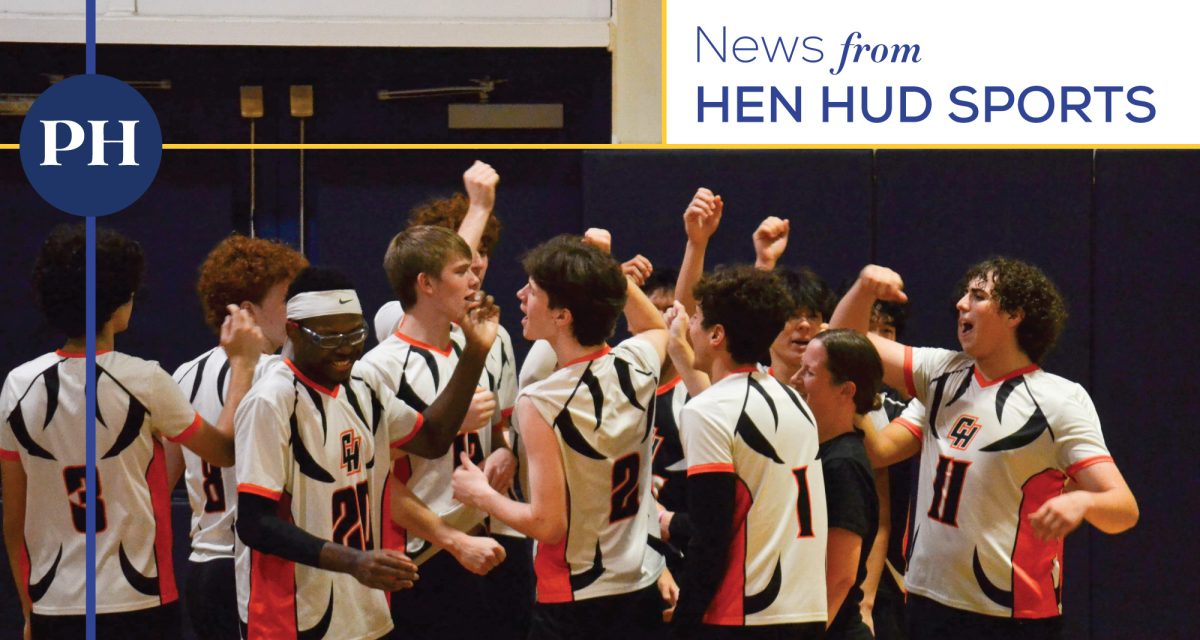

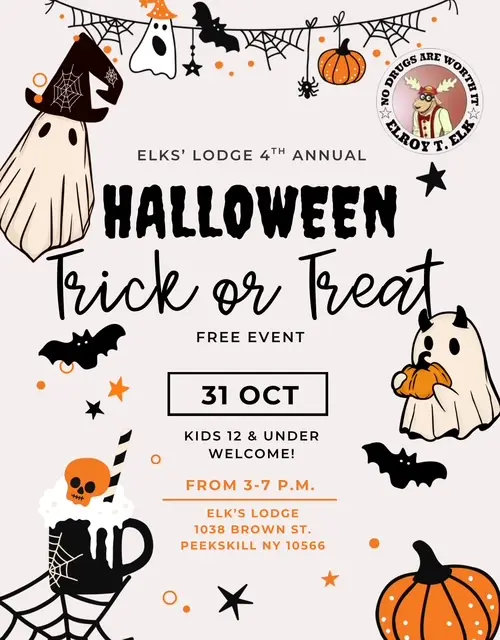
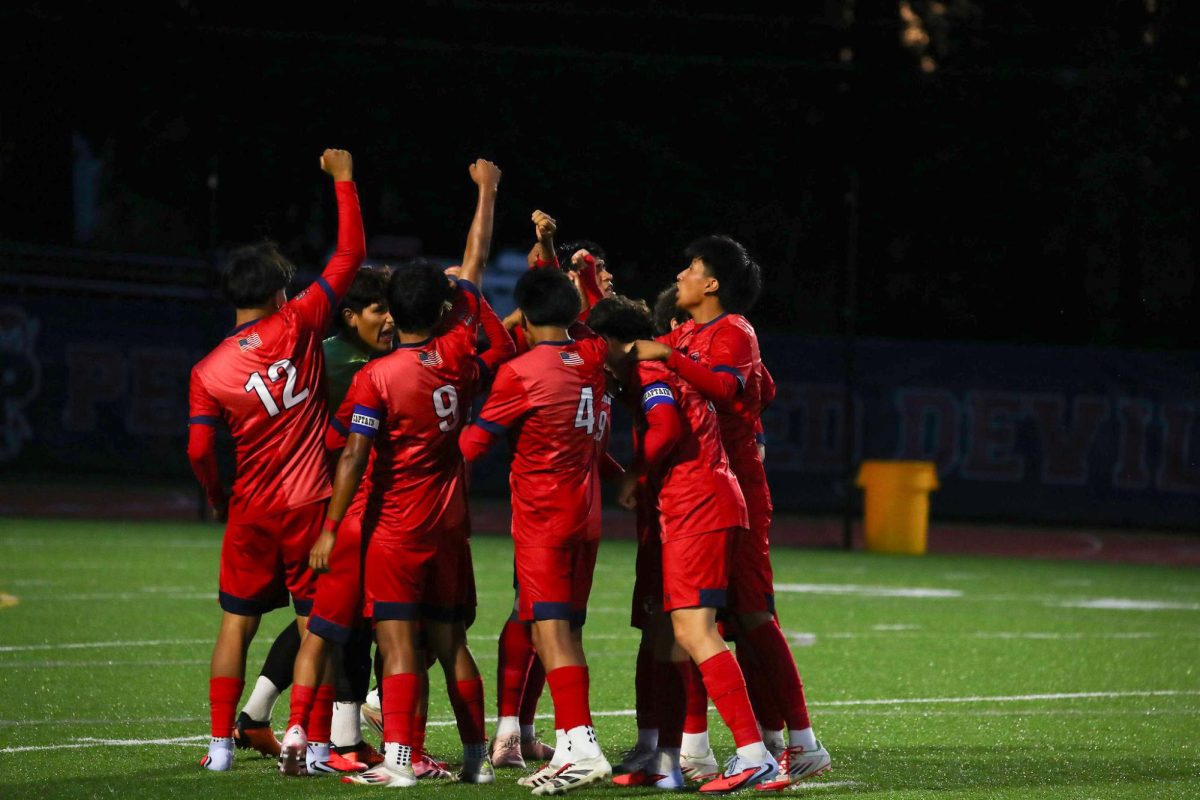







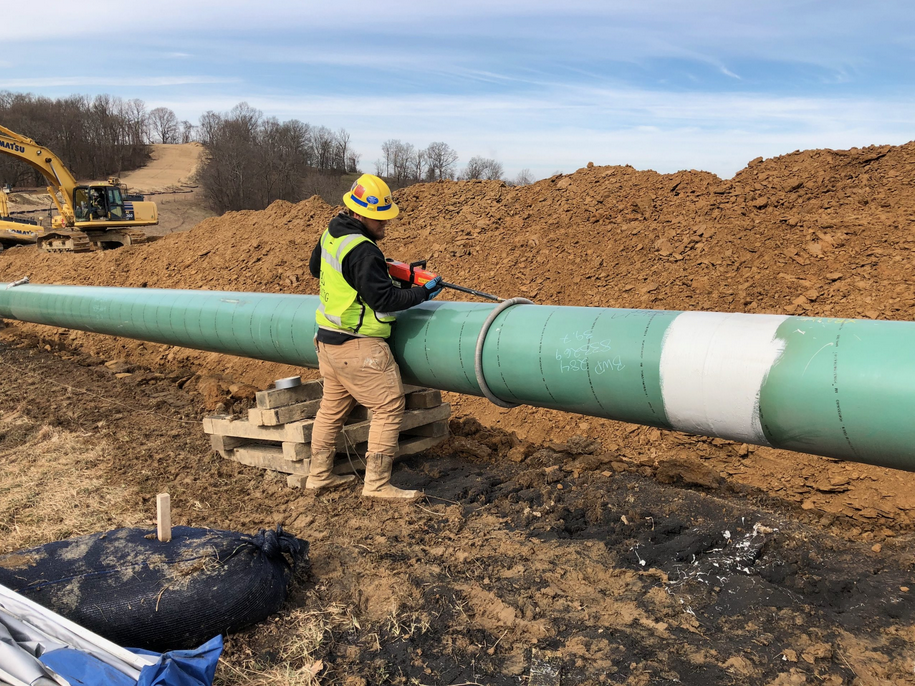

![Peekskill girls volleyball in action against Fox Lane on Oct. 16. (Peekskill City School District]](https://peekskillherald.com/wp-content/uploads/2025/10/Lead-photo-6-1200x640.jpg)
